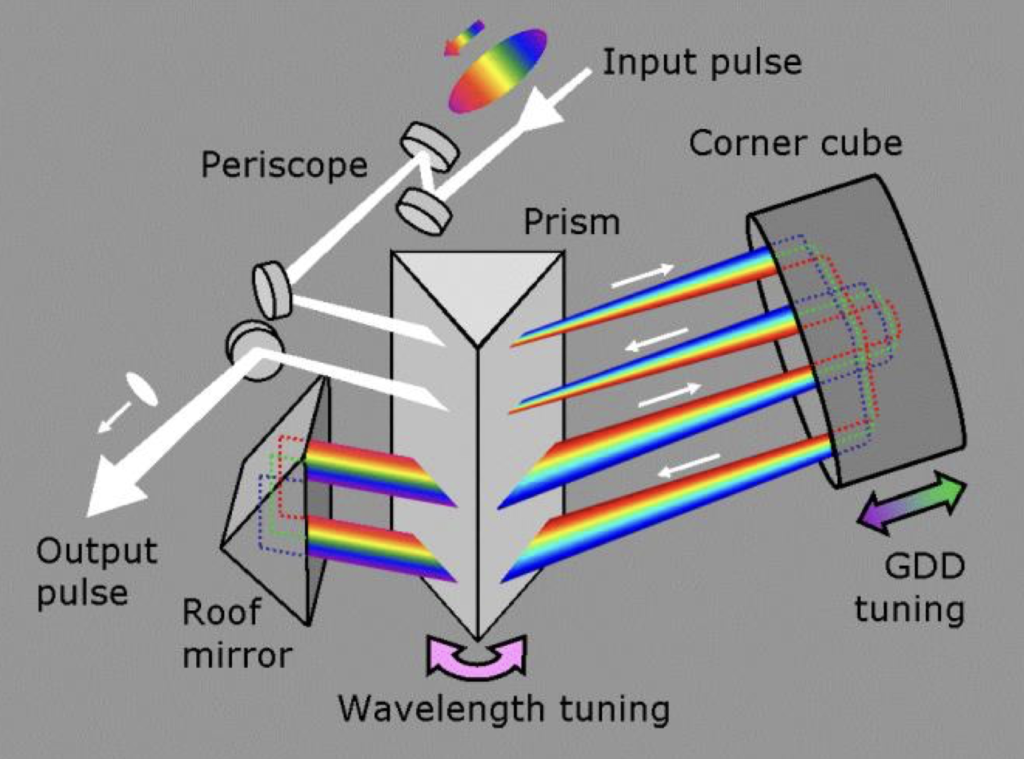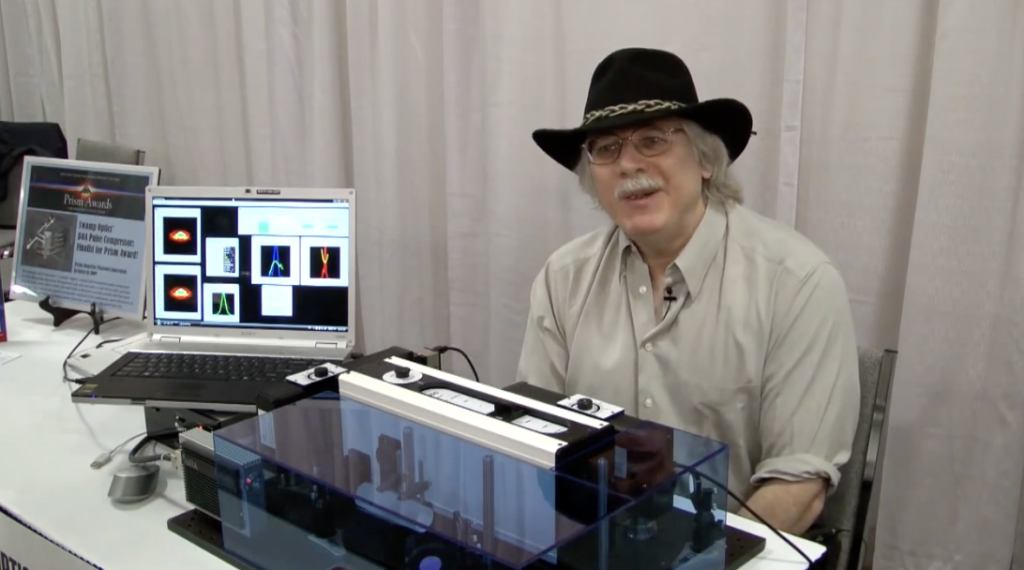When do you need a pulse compressor for multiphoton imaging?

Here’s a quick question I received via email that might be worth sharing: Does using a pulse compressor make a noticeable difference?
It can, specifically when:
(1) There is a lot of glass in the system (more than a typical system– our Diesel2p system needs it),
(2) You’re starting with very short pulses (e.g., <100 fs),
and/or
(3) You’re working right at the limit of average power (e.g., 100 mW is too dim, but 120 mW damages tissue)
In general, shorter pulses suffer more dispersion (because they typically have larger spectral bandwidth), and shorter wavelengths suffer more dispersion (because the index of refraction typically changes faster, per nm of wavelength, towards the blue/uv end of the spectrum).
So if you’re imaging with 1050 nm, starting with ~150 fs pulses, and you only need 20 mW to image and your damage threshold is closer to 200 mW, and you don’t have much glass in your system (i.e., a conventional system), then a pulse compressor might not buy you much.
Many laser systems, including Ti:Sapphs and fiber lasers, can be purchased with built-in compressors, and these have generally worked quite well. There are standalone pulse-compressors too. If you want to learn more about them, Swamp Optics has excellent info on their web site.
Thanks, Rick Trebino:
